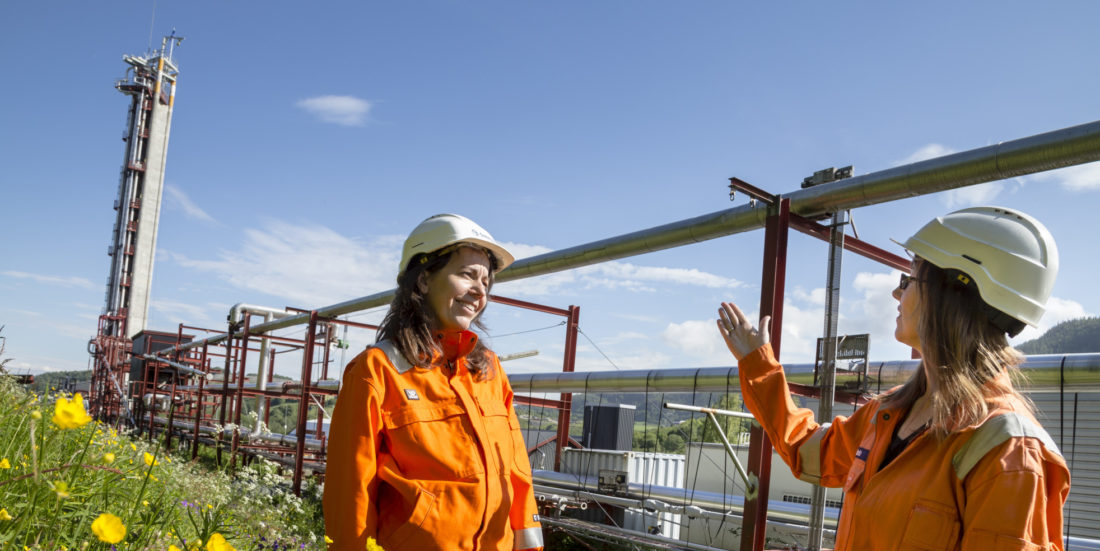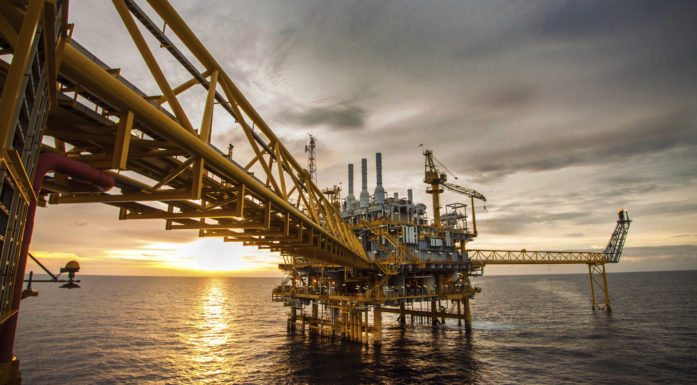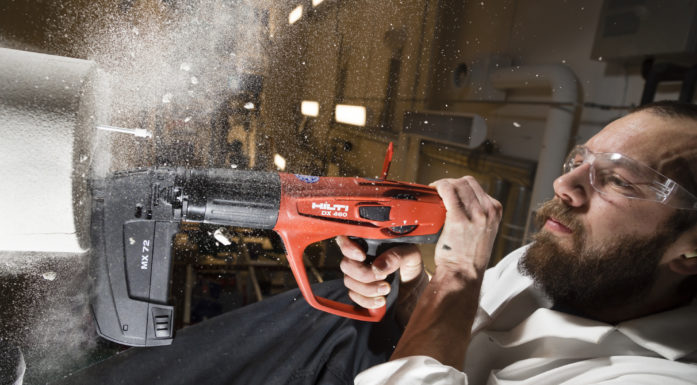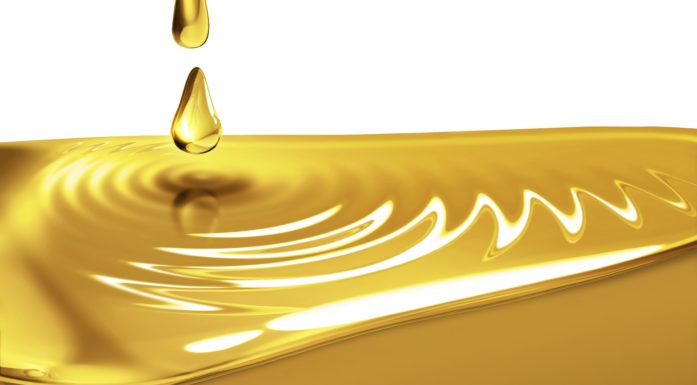Lab results could improve offshore production economics
Norwegian laboratory tests show that gas wells can continue to be productive longer than we predicted, before they need expensive “anti-ageing” support.
Gas fields in operation gradually lose their power in the course of time, just as we do as we grow older. This is why many ageing gas fields are given help by compressors, which help to lift the gas and its associated light oil up to the surface.
On offshore fields, compressors are installed on board platforms or on the seabed. Fresh laboratory data from SINTEF, the largest independent research organisation in Scandinavia, show that machinery of this sort can be put into operation later than current numerical models have led us to believe.
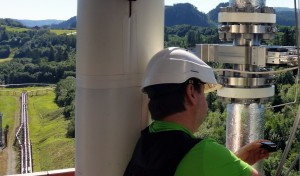
Fifty metres above ground level, equipment is checked before the start of the vertical flow tests at SINTEF’s multiphase laboratory. Photo: SINTEF
“Postponing investments in compressors on gas fields improves the economics of such fields. Our findings will thus help make gas production more profitable,” says project manager Maria Barrio of SINTEF, Scandinavia’s largest independent research organisation.
Petroleum fields are like balloons
The pressure in all oil and gas fields gradually falls as the hydrocarbon products are extracted, rather like what happens when gas goes out of a balloon. In gas wells, the flow-rate of the gas also falls, since pressure is precisely what drives the gas out of the well.
Most gas fields also contain light oil, or condensate. The Trondheim tests have given us new knowledge about the minimum flow-rate needed in vertical wells and risers for the gas to pull the oil up with it.
“Our measurements show that the gas does not need to travel at such high speeds as we thought necessary to transport the light oil. This means that it will also take longer for the speed of the gas to fall to such an extent that the oil forms liquid plugs that choke the well. This in turn suggests that operators can wait longer than they expected before they have to rely on compressors to maintain the gas flow-rate,” explains project manager Barrio.
Computer models updated
In their unique tests, the SINTEF researchers allowed gas to which small quantities of oil had been added, to flow upwards through a 50-metre vertical tower with a diameter of four inches.
“The backdrop for these experiments is that the petroleum industry performs mathematical simulations when it is planning how offshore fields are to be developed and operated. Until now, companies have used models that offer only approximate simulations of phenomena that have been observed in vertical gas risers,” says Barrio.
The vertical flow experiments were carried out in a special heavily instrumented pipe that was erected specially for the project. The results have been used to update the simulation tool, LedaFlow, that SINTEF has developed in collaboration with oil companies ConocoPhillips and Total, and technology provider Kongsberg Oil and Gas.
Improved confidence in simulations
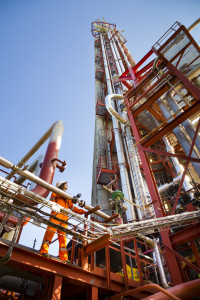
SINTEF’s multiphase flow laboratory, where the measurements were carried out, is the largest of its type in the world. Photo: Thor Nielsen/SINTEF
Dominique Larrey, an expert on multiphase flow in the French oil company Total, explains that the new and more trustworthy model improves the confidence Flow Assurance engineers may have in the results of their simulation work.
“This backs up their recommendations for the design and the operation of oil and gas production facilities. In particular, good predictions from the LedaFlow software will influence on whether and when a company decides to invest in compressors to increase gas field recoveries, whereby affecting the economics of gas field overall development,” says Larrey.
Joint effort
The tests were carried out at SINTEF’s Multiphase Flow Laboratory in Trondheim, the largest installation in the world for studies of how oil, gas and water flow together in one and the same pipeline.
The measurements were performed as part of an innovation project for industry (IPN), which is financed by the Research Council of Norway and LedaFlow Technologies DA.
Improved modelling of well streams
The phenomena studied in SINTEF's project is called "liquid loading". The project gives new knowledge on the flow rate needed in vertical gas wells and risers for the gas to pull the light oil of the well up with it.
Multiphase flow experts of the French oil company Total confirm that the results of this project are useful for the oil and gas industry.
Jacques Marty, a well performance engineer working with Total, explains that modelling improvements ensuing from this project enhances the reliability of several predictions, and in this way improves the following subsequent operations:
- Predicting the future liquid loading of gas wells and assessing the economics of new gas development projects
- Selecting remedial equipment such as velocity string after checking its efficiency
- Designing the well completion and optimizing the trajectory of wells drilled in tight gas reservoirs
- Preparing the clean-up program of tricky wells like HP/HT gas wells or gas-lifted oil wells
- Preparing the tricky first-oil start-up operating procedure through deep-offshore risers.
